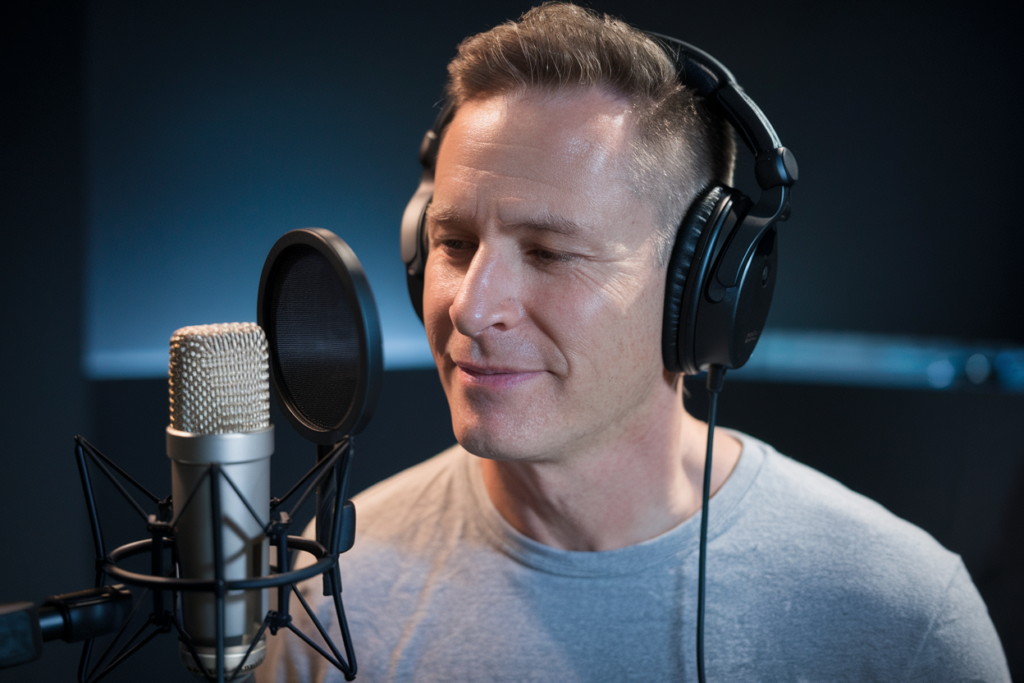Key Takeaways
- Approximately 45 million native Polish speakers exist globally, with around 98% of the Polish population speaking it as their first language.
- Major Polish-speaking communities are found in the USA, Germany, UK, and Canada, reflecting historical migration patterns.
- Understanding these statistics is crucial for effective engagement with Polish-speaking audiences, particularly in sectors like translation and voiceover services.
- Demographic factors such as age and education influence language proficiency, with younger generations often being more bilingual compared to older speakers.
- Challenges in data collection stem from methodological issues and accessibility concerns, affecting the accuracy of statistics on native Polish speakers.
Ever wondered how many native Polish speakers are out there? With Poland’s rich history and vibrant culture, understanding the statistics behind Polish native speakers can unlock fascinating insights into language trends and demographics.
Overview of Polish Native Speaker Statistics
Polish is spoken by approximately 45 million native speakers, primarily in Poland. This number reflects the significant role of the Polish language in Europe and its cultural importance. The majority of Polish speakers reside in Poland, but sizable communities exist in countries like the United States, Germany, the United Kingdom, and Canada.
In terms of demographics, around 98% of Poles speak Polish as their first language. The language has a rich history influenced by various cultures and languages over time. As you explore these statistics, consider how they shape not only communication within Poland but also connections with Polish-speaking communities worldwide.
The increasing globalization encourages many people to learn Polish as a second language. This trend affects industries such as translation and voiceover services, where understanding nuances in pronunciation and dialect can enhance engagement with audiences.
Here’s a breakdown of some key statistics related to native Polish speakers:
| Statistic | Value |
|---|---|
| Total Native Speakers | Approximately 45 million |
| Percentage of Population Speaking | Around 98% |
| Major Countries with Speakers | USA, Germany, UK, Canada |
Understanding these statistics provides insight into potential markets for voice talent services targeting Polish-speaking audiences. With a growing demand for quality voiceovers in various fields including film, advertising, and education, recognizing the landscape of native speakers helps tailor your approach effectively.
Importance of Native Speaker Statistics
Understanding native speaker statistics is crucial for anyone looking to engage with Polish-speaking audiences. These statistics reveal not only the language’s reach but also its cultural significance, making them invaluable for effective communication strategies.
Language Preservation
Language preservation hinges on the number of native speakers. With about 45 million native Polish speakers globally, preserving this rich linguistic heritage is vital. As globalization expands, so does the need to maintain linguistic diversity. You’ll find that Polish communities actively promote their language through education and media, ensuring future generations remain connected to their roots. This creates opportunities for voice talent to contribute meaningfully in various sectors by providing authentic and culturally resonant content.
Cultural Identity
Cultural identity thrives through language use. For Poles, speaking Polish embodies a strong sense of belonging and community. The fact that approximately 98% of Poles speak it as their first language underscores its role in shaping national identity and pride. Engaging with this community means understanding these layers of culture and history, which can significantly enhance projects such as films or commercials aimed at Polish audiences. Utilizing skilled voice actors who resonate with this cultural context enriches your message and fosters deeper connections with viewers or listeners.
By tapping into these insights from native speaker statistics, you can better navigate the landscape of Polish-speaking markets while leveraging quality voiceover services tailored specifically for this audience.
Geographic Distribution of Polish Native Speakers
Polish native speakers are primarily concentrated in specific regions, which significantly influences language use and cultural expression.
Poland
Poland is home to around 38 million native Polish speakers. With nearly 98% of the population speaking Polish as their first language, the country serves as a vibrant center for Polish culture and identity. Cities like Warsaw, Kraków, and Wrocław showcase rich linguistic traditions through media, education, and daily communication. The importance of preserving this linguistic heritage cannot be overstated; it fosters national pride while ensuring that future generations remain connected to their roots.
Polish Diaspora
Significant communities of Polish speakers also exist outside Poland due to historical migration patterns. In the United States, approximately 10% of people with Polish ancestry maintain the language, especially in cities like Chicago and New York. Germany hosts about 2 million Poles or individuals of Polish descent who converse in their native tongue. Other notable populations can be found in the United Kingdom and Canada.
Understanding these geographic distributions helps you recognize where opportunities arise for engaging with Polish-speaking audiences. Whether you’re considering projects in film or advertising targeting these demographics or seeking voice talent services tailored to their unique cultural contexts, knowing where your audience resides makes a difference. This knowledge enhances your ability to connect authentically with various communities around the globe.
Demographic Factors Influencing Statistics
Demographic factors play a significant role in shaping the statistics of Polish native speakers. Understanding these influences can enhance your approach to engaging with Polish-speaking audiences.
Age Groups
Age groups significantly impact language use and proficiency. Younger generations often display higher levels of bilingualism, especially in urban areas where exposure to foreign languages is common. For instance, many young Poles engage with English through education and media, leading to a more multilingual population among those under 30. Conversely, older age groups typically maintain stronger ties to traditional Polish culture, with most speaking only Polish as their first language. This generational divide can affect how you tailor your messaging or voiceover projects for different audience segments.
Education Levels
Education levels also influence language proficiency among native speakers. Higher education often correlates with better command of both Polish and foreign languages. University-educated individuals frequently participate in international environments where multiple languages are spoken, enhancing their linguistic skills. In contrast, those with lower educational attainment may rely more heavily on Polish in their daily lives. Recognizing this educational spectrum allows you to adapt your content or voice talent choices effectively, ensuring they resonate well across various demographics within the Polish-speaking community.
By considering these demographic factors—age groups and education levels—you can craft targeted strategies that connect authentically with your audience while leveraging insights from native speaker statistics for impactful communication.
Challenges in Data Collection
Collecting data on Polish native speakers involves several challenges that can affect the accuracy and reliability of statistics. These challenges stem from methodological issues and accessibility of data.
Methodological Issues
Methodological issues often arise when defining what constitutes a „native speaker.” Different studies may have varying criteria, leading to inconsistent results. For instance, some research might include individuals who speak Polish at home but identify as bilinguals, while others may focus solely on those who exclusively use Polish. This ambiguity complicates efforts to present clear statistics that accurately reflect the population.
Additionally, sampling methods can introduce biases. Surveys conducted in urban areas may not represent rural populations adequately. Rural communities might retain stronger ties to traditional language usage compared to urban centers where bilingualism is more prevalent. Understanding these nuances helps ensure that any gathered statistics truly represent the diverse experiences within the Polish-speaking community.
Accessibility of Data
Accessibility of data poses another significant challenge. Many sources rely on governmental or academic institutions for demographic information, but such data isn’t always readily available or up-to-date. Moreover, language barriers can hinder access to relevant studies or reports published in Polish or other languages.
Online databases often lack comprehensive datasets specific to Polish speakers outside Poland, especially in countries with smaller communities like Canada or Australia. This gap makes it difficult for businesses targeting these audiences—such as those in voiceover services—to obtain accurate insights necessary for effective marketing strategies and engagement efforts.
Navigating these challenges requires persistent research and adaptation. By recognizing the complexities involved in collecting native speaker statistics, you can better tailor your approach when connecting with Polish-speaking markets through targeted communication strategies and high-quality content tailored specifically for them.
Conclusion
Understanding Polish native speaker statistics isn’t just about numbers; it’s about connecting with a rich cultural heritage. These insights reveal the language’s extensive reach and highlight the importance of preserving linguistic diversity in an increasingly globalized world.
By appreciating these statistics, you can develop effective strategies to engage with Polish-speaking audiences authentically. Whether you’re involved in business or creative projects, recognizing the demographic nuances will enhance your communication efforts significantly.
The ongoing promotion of Polish through education and media ensures that this vibrant culture continues to thrive, making it essential for anyone looking to connect meaningfully within these communities. Embrace this knowledge as you navigate opportunities in markets where Polish is spoken, ensuring your approach resonates deeply with its speakers.
Frequently Asked Questions
What is the significance of Polish native speakers in today’s world?
Polish native speakers are crucial for understanding Poland’s rich history and culture. With around 45 million speakers globally, they play a vital role in preserving linguistic diversity and cultural identity, especially within communities in countries like the US, Germany, and the UK.
How many people speak Polish as their first language?
Approximately 98% of Poles speak Polish as their first language. This highlights the language’s strong cultural importance and its significant presence within Poland, where about 38 million residents are native speakers.
Why is learning Polish gaining popularity?
The rise in globalization has led to an increasing number of people interested in learning Polish as a second language. This trend affects various industries, including translation and voiceover services that cater to Polish-speaking audiences.
What demographic factors influence Polish speaker statistics?
Demographic factors such as age and education level significantly affect Polish speaker statistics. Younger generations often show higher bilingualism rates, while older individuals tend to maintain stronger connections to traditional culture and language usage.
What challenges exist in collecting data on Polish native speakers?
Data collection on Polish native speakers faces several challenges, including varying definitions of „native speaker,” biases from urban-centric surveys, and difficulties accessing reliable information outside Poland due to language barriers. These challenges complicate accurate representation of the community.







